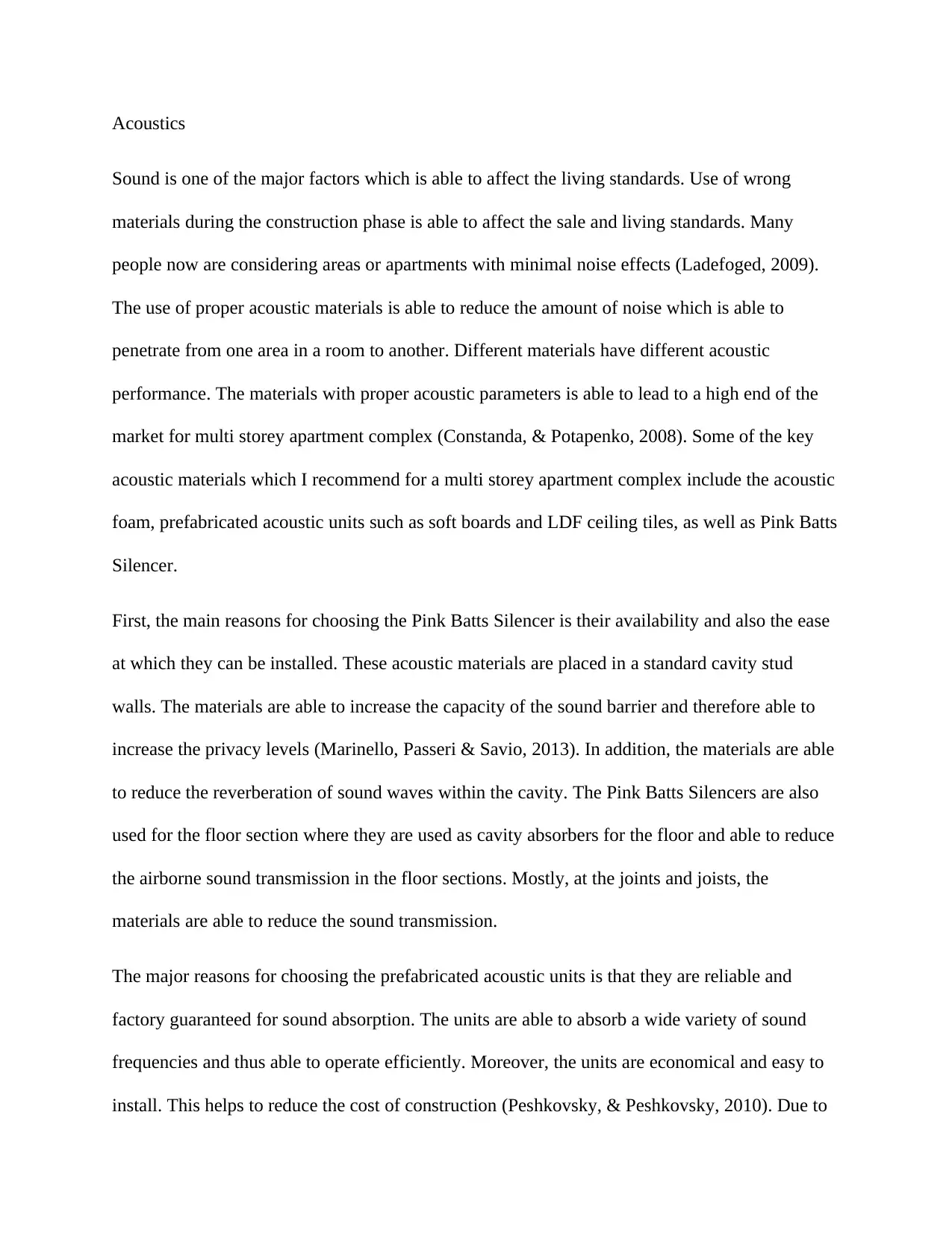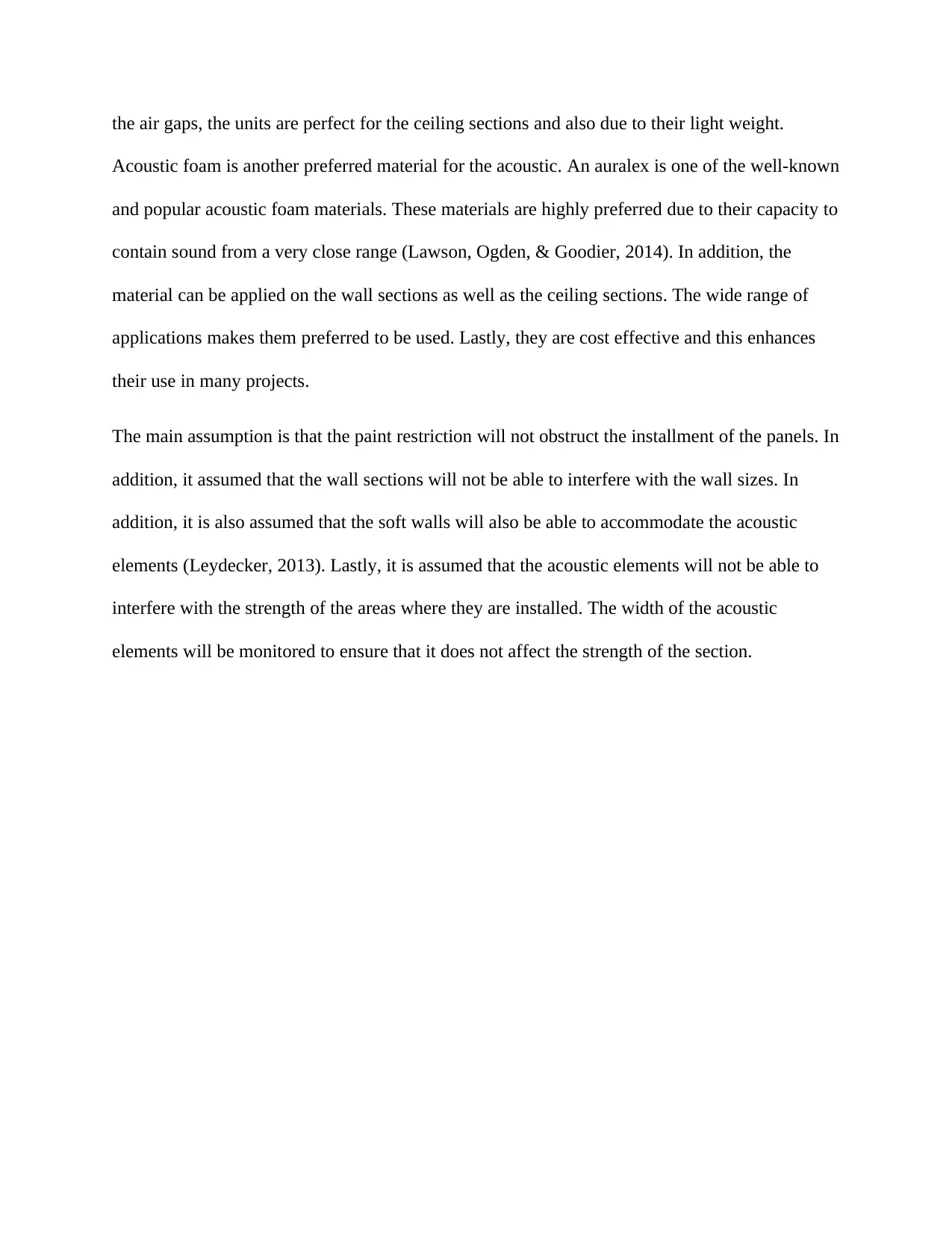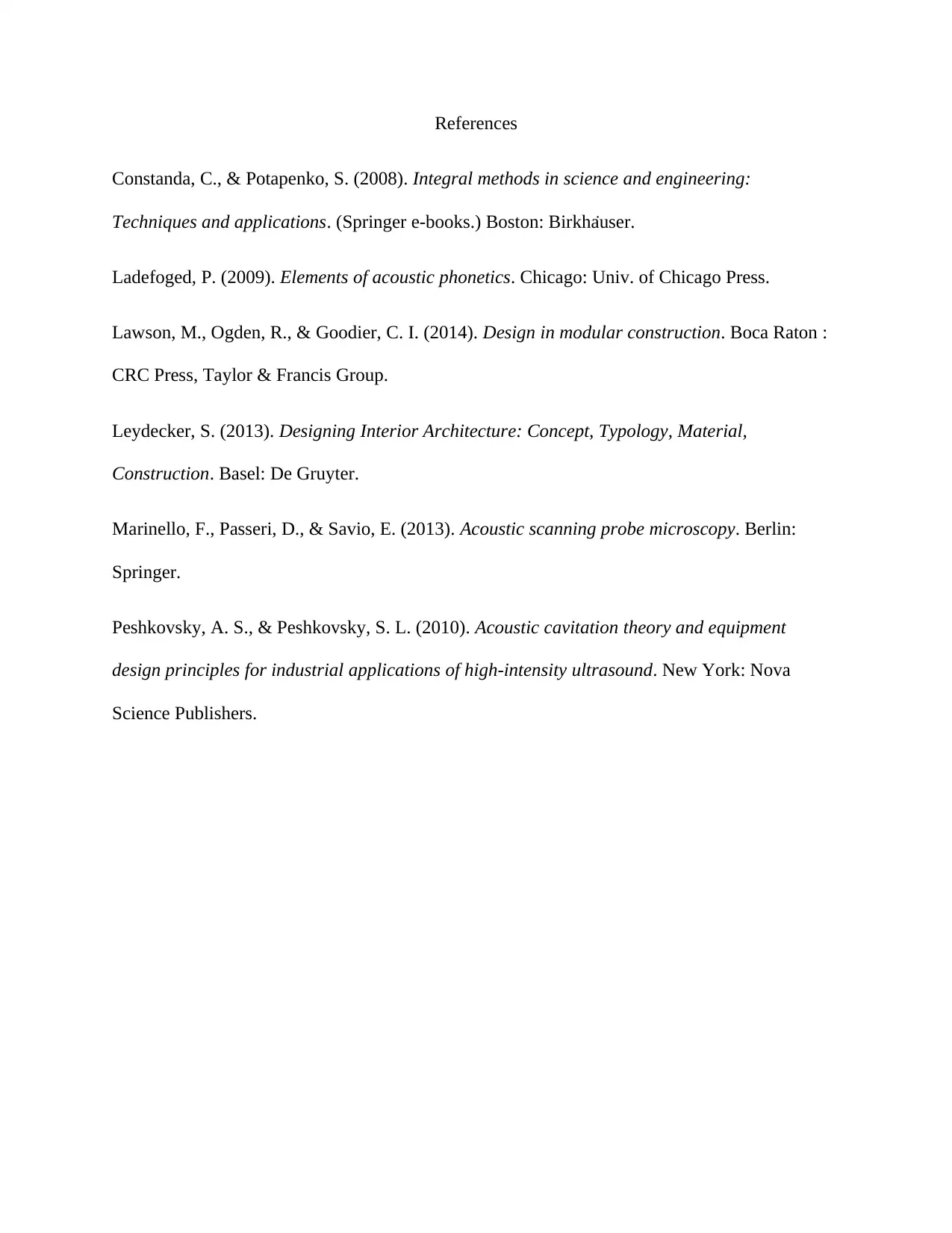Acoustics: Material Specification for Albany Multi-Storey Apartments
VerifiedAdded on 2023/06/08
|3
|764
|421
Report
AI Summary
This report provides an executive summary of recommended materials for achieving good acoustic performance in a high-end, multi-story apartment complex in New Zealand. It addresses the need for low sound transfer between apartments by investigating locally available materials and justifying the choice of acoustic foam (Auralex), prefabricated acoustic units (soft boards, LDF ceiling tiles), and Pink Batts Silencer. The report highlights the benefits of each material, including ease of installation, sound absorption capabilities across various frequencies, and cost-effectiveness. It also outlines key assumptions related to paint restrictions, wall sizes, and the structural integrity of the installation areas. The recommendations aim to meet Building Code requirements for Sound Transmission Class (STC) and Impact Insulation Class (IIC) ratings.
1 out of 3





![[object Object]](/_next/static/media/star-bottom.7253800d.svg)